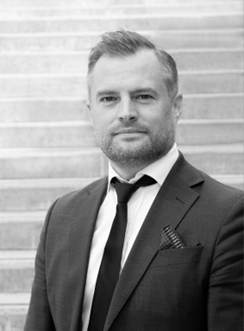Möt vår nya VD Johan Sandberg

Vår nya VD har bred erfarenhet från den havsbaserade vindkraftsindustrin och börjar senast den 1 mars 2023.
Vår nya VD har bred erfarenhet från den havsbaserade vindkraftsindustrin och börjar senast den 1 mars 2023.
Läs pressmeddelandet om VD-bytet som gick ut i morse här.
Efter att ha tagit en civilingenjörsexamen från Lunds Universitet arbetade Johan med riskhantering inom företag innan han 2008 började på klassificeringssällskapet DNV och därmed inledde sin karriär inom havsbaserad vindkraft.
På DNV steg han i graderna och tog en MBA från Nanyang Technological University Singapore 2012. Han hade bland annat ansvar för de globala rådgivningstjänsterna inom havsbaserad förnyelsebar energi och ansvarade för framtagandet av världens första designstandard för flytande vindkraftsturbiner och världens enda riktlinjer för integrering av havsbaserad vindkraft med olje- och gasplattformar.
2019 började han på den norska industrigruppen Aker som Chef för affärsutveckling inom flytande vindkraft för Aker Solutions, Aker Offshore och Freja Offshore.
”Jag har haft ett specifikt fokus på flytande vindkraftsteknik i nästan 15 år. Jag har utvecklat och utvärderat designstandarder, tillverkning, operationell verksamhet, försörjningskedjor, policy och samexisterandet på havet”, säger Johan Sandberg.
Då klimatförändringarna, energisäkerhet och hållbarhet tvingar fram förändring av världens energisystem har Johan länge tyckt att det finns ett behov av att tänka nytt och annorlunda.
”Jag har i flera år sagt att vi måste våga tänka stora okonventionella tankar för att lösa det och genom att börja på SeaTwirl ämnar jag leva upp till det. Havsbaserad vindkraft är en nyckel i lösningen och det är av yttersta vikt att vi tar oss ut på djupt vatten, bortom horisonten. Jag har alltid haft ett öga på just horisonten för att se vilken teknik som kommer att bli viktig i framtiden. Vertikalaxlade vindturbiner har potentialen att bli nästa stora grej”, säger han.
I SeaTwirl ser han ett företag som har utmanat konventionella tankesätt och utveckling spännande ny teknik.
”Teamet på SeaTwirl har verkligen tänkt utanför boxen och utvecklat en vertikalaxlad vindturbin på ett roterande flytelement. Det är en teknik som kan spela en väldigt viktig roll i framtidens energilandskap. Vi har en otroligt spännande resa framför oss då vi ska bevisa och kommersialisera vår teknik i god tid före 2030. Jag ser verkligen fram emot att komma igång”, säger han.